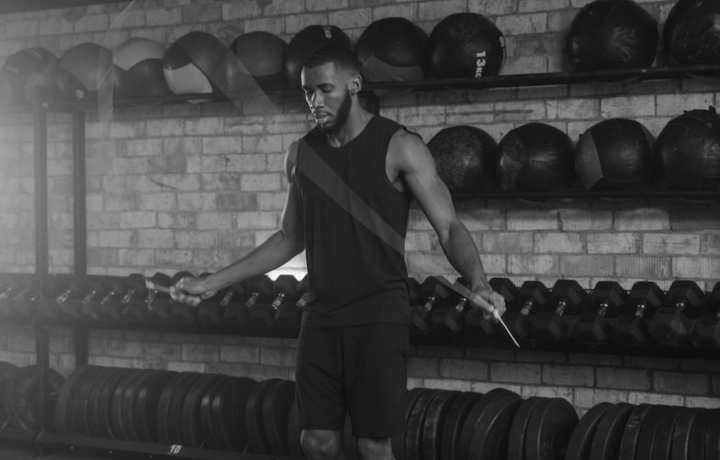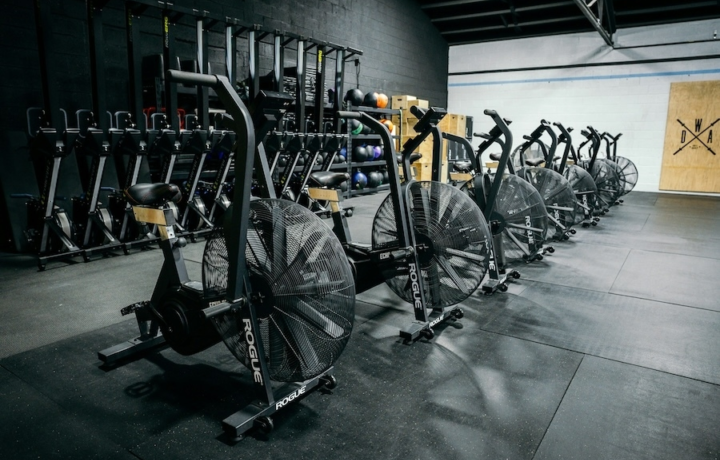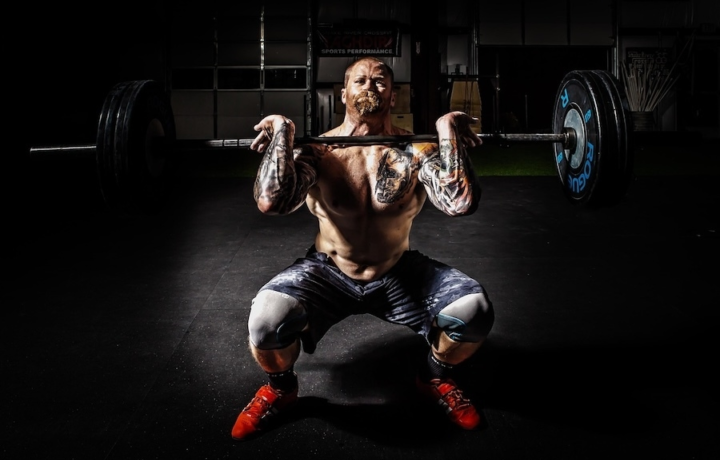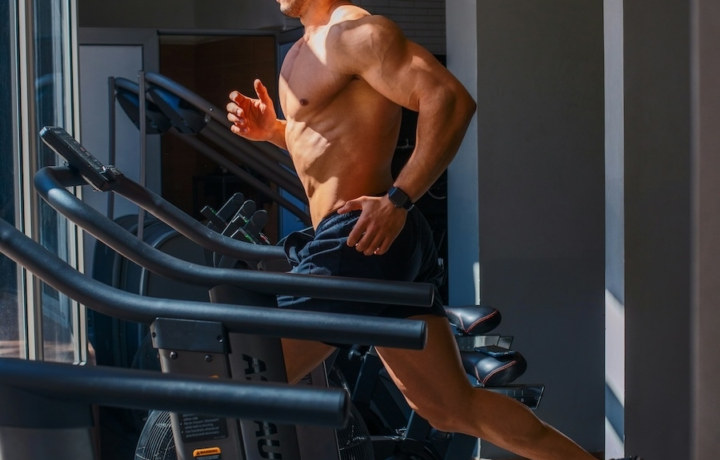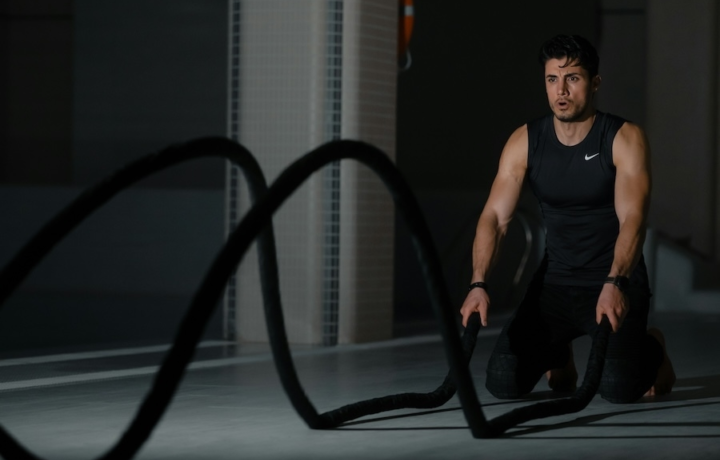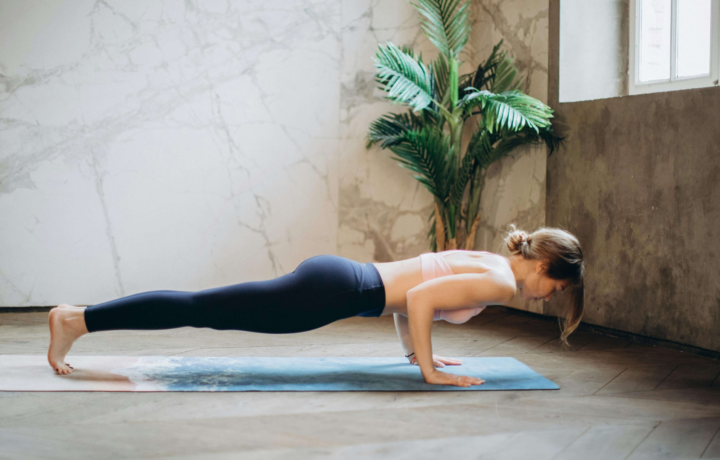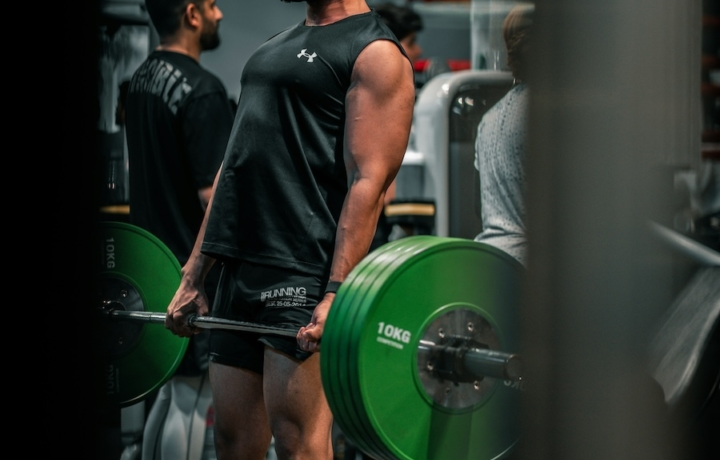Exercise
Marching On Spot

Marching On Spot
How to Perform
- Stand tall with your feet hip-width apart, arms relaxed at your sides, and shoulders pulled back.
- Engage your core by drawing your navel toward your spine while maintaining a neutral posture throughout your entire back.
- Begin by lifting your right knee up toward your chest until your thigh is parallel to the ground, while simultaneously bending your elbows and pumping your left arm forward and right arm backward.
- Lower your right foot back down to the starting position as you exhale, making contact with the ball of your foot first, then the heel.
- Immediately lift your left knee toward your chest while switching arm positions, bringing your right arm forward and left arm backward in a natural running motion.
- Continue alternating legs in a rhythmic marching pattern, maintaining a controlled breathing pattern by inhaling for two steps and exhaling for two steps.
- Keep your gaze forward, chest lifted, and avoid excessive forward lean or arching in your lower back as you march.
- Increase the height of your knees or speed of your march to intensify the exercise while always maintaining proper posture and controlled movements.
Important information
- Make sure your feet land softly with each step to reduce impact on your joints, especially if performing on a hard surface.
- Keep your shoulders relaxed and down away from your ears to prevent unnecessary tension in your upper body.
- If balance is an issue, position yourself near a wall or sturdy piece of furniture that you can touch for support if needed.
- Focus on lifting your knees with your hip flexors rather than kicking your feet forward to maximize core engagement.

Marching On Spot
Exercise Details
Primary Muscles
Muscle Groups
Mechanic
Built for progress
Take the guesswork out of training
Create personalized AI-powered workout plans that evolve with you. Train smarter, track every rep and keep moving forward, one workout at a time.






Marching on the spot offers a perfect entry point for beginners looking to elevate their heart rate without complex movements or equipment. This foundational exercise primarily engages your quadriceps and calves, creating a gentle but effective lower body workout while simultaneously boosting your cardiovascular system. What makes marching on the spot so versatile is its adaptability across different workout segments. Whether you're incorporating it into a high-intensity interval training (HIIT) circuit for quick bursts of movement, using it to prepare your body during a warm-up, or gradually decreasing your heart rate during a cool-down phase, this exercise seamlessly transitions between roles. The beauty of this movement lies in its endurance-building potential.
By consistently performing marching on the spot for extended periods, you'll notice improvements in your aerobic capacity and muscular stamina. The steady, rhythmic nature of the exercise elevates your heart rate into the cardio training zone, making it an effective calorie-burning activity that can be sustained longer than more intense exercises. Research shows that even simple movements like marching can significantly impact your metabolic rate and contribute to improved fitness levels over time. The accessibility of this exercise makes it particularly valuable for those beginning their fitness journey or returning after a break. No specialized coordination or previous experience is required: just a willingness to move.
For those tracking fitness metrics, marching on the spot provides a reliable baseline activity that can help establish your working heart rate zones and monitor improvements in recovery time as your fitness progresses. The minimal impact nature of the movement makes it sustainable for longer sessions without placing excessive stress on your joints, making it a smart addition to any well-rounded fitness program.
FAQ - Marching On Spot
Marching on the spot primarily engages your quadriceps and calves while also activating your core muscles for stability. Your hip flexors also work as you lift each knee, making it an effective lower-body workout with cardiovascular benefits.
Increase intensity by lifting your knees higher toward your chest, adding arm movements, or incorporating intervals of speed (30 seconds fast, 30 seconds moderate). For advanced variation, add light ankle weights or transition to high knees with a more explosive movement.
For cardiovascular benefits, aim for at least 10-15 minutes of continuous marching, maintaining an elevated heart rate of 50-70% of your maximum. If using it within a HIIT workout, 30-60 second intervals with equal rest periods are most effective.
Marching on the spot is generally low-impact and safe for most people with minor knee issues, especially compared to running or jumping. Keep movements controlled and avoid lifting knees too high if you experience discomfort. Those with significant knee conditions should consult their healthcare provider first.
Avoid hunching your shoulders or leaning forward—maintain an upright posture with your core engaged. Don't lock your supporting leg's knee when the opposite leg is raised, and ensure you're landing gently on the ball of your foot rather than your heel to minimize impact.


